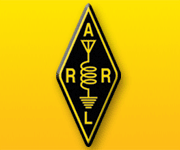What is it that causes the sizzling sound that high tension power lines emit when it’s humid or raining?
The power lines are hot. You’re probably hearing the water boil.
Extreme humidity and moisture in the air loweres the resistance value of air.
In normal conditions, it’s something like 10KV/inch for arcing, (1 inch gap, 9999 V= no arc, 10KV = arcing across the same gap). If you have little dropplets in the air, the electricity arcs between them…
Partly WAG, partly based on old EE knowledge… no cites.
-Butler
No way. The power lines are designed to be of a sufficient thickness to be able to cope with the current running through them easily, specifically so as to avoid heating and consequent inefficiency. There is no way your power company is running thousands of miles of heater element all through its distribution area.
And if you don’t believe me, do you think birds feet are made of asbestos or what?
Sometimes if conditions are right they can actually flash over to ground.
Where I worked the incoming lines to the petrochemical plants were 120,000 volt.
We had a couple of large cooling towers near the transmission lines support towers and the sub station. The mist from the cooling towers combined with a frequent sand storms, could lay down a coating on the insulators that only needed more moisture like during a heavy fog to cause major problems. I would always get very nervous on morning shift when we had fog and the insulators would start buzzing. Sometimes I could see small flashes of fire going across the insulators… then suddenly there was a flashes similar to a lighting strike as the high voltage jumps the insulator to the support tower and to ground. These major flash overs would trip the line, shutting off the power to the plants. Then all hell broke loose. Normally to prevent this the insulators on the towers were cleaned with high pressure water…but sometimes it still happen.
Exactly. And the voltages in long-distance trasmission lines are high specifically to keep the current relatively low–on the order of a few hundred amps. The lines are of sufficient thickness to carry this with only slight heating, as you noted.
Although i’m not exactly sure what aaelghat means by high-tension (most people take this to mean transmission voltages instead of distribution), Crafter_man has once again nailed it with his mention of corona. For any that possess it, there is a pretty decent explanation of corona and the audible effects as well as TV and Radio interference in the Standard Handbook for Electrical Engineers. Basically, corona is the ionization of the air surrounding the conductor. Depending on conductor load and humidity, the audible effects of this can be anywhere from a hum to a pretty fair crackle. Corona is present to a certain degree in all EHV (extra high voltage) transmission lines but tends to form non-uniformly at surface irregularities and sharp edges. If you look at the insulator strings on transmission lines you will often see hoop-shaped attachments where the conductor attaches to the string. These are corona rings and are used to contain the field generated by the corona and prevent the breakdown of the insulators.
Also, EHV transmission lines are designed to carry a lot of power and normal conductor temperatures can easily reach 100° C or more. Large conductors are used on transmission lines for the same reason they are used on distribution lines; current carrying capacity. A transmission line with bundled 1272 ACSR can carry 2400 Amps per phase at full load. Transmission lines are routinely ‘uprated’ to allow more power transmission. Generally this involves running the lines at a higher conductor temperature necessitating studies and minor construction to ensure adequate clearances are maintained, but it is much more economical than constructing new transmission lines.
